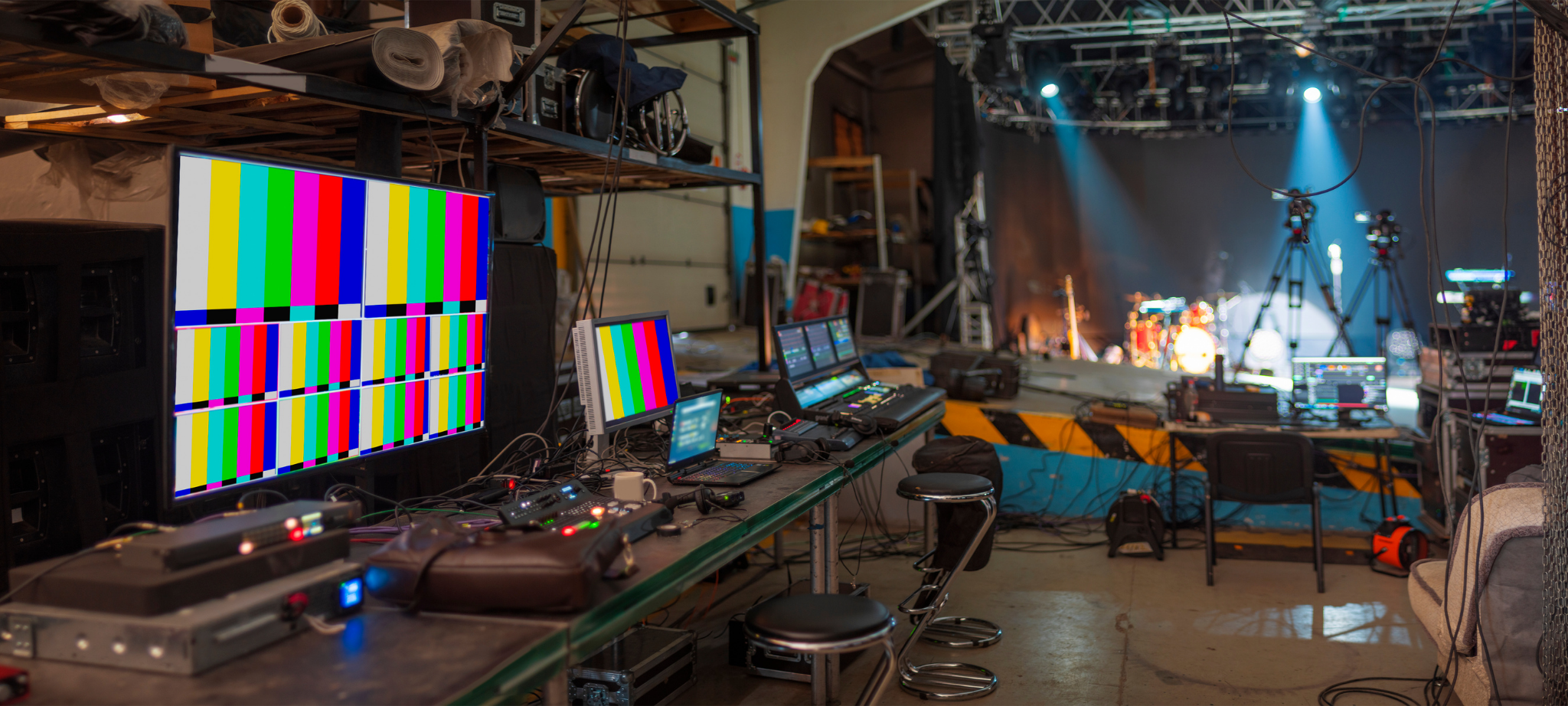In the course of the Pandemic, the Silicon Valley upstart has become synonymous with video chat. According to Transparency Market Research, the video collaboration market will reach $11.56 billion by 2027, and the demand will continue to rise. Digital-first planning and remote communication have become a necessity for teams. The question is: how will the future of video conferencing change the way we work?
Imagine a future where you can work with colleagues from all over the world without ever having to leave your home. Thanks to modern video communications technologies, that future is not so far away. These innovations allow companies who are tackling the world’s biggest problems to hire talented people from all over the world, spreading their workforces across countries, cultures, continents, and time zones.
The future of video conferencing is not just about convenience; it’s about collaboration. With these tools, we can break down barriers and build bridges between people and cultures. We can solve problems that have seemed intractable in the past. So let’s embrace this future and use it to change the world.
Post-Covid Transformation of the Work Dynamic
In March 2020, a sudden time-lapse raised a magnifying glass to how we were working. We all were snarled in a hamster wheel of non-stop engagements, meetings, and stimulation. Due to fewer commitments and nowhere to be, we suddenly had more time to focus on the people and things we loved.
We began to realize that the grind from Monday through Friday wasn't the only way to work, which might explain employees' desire for more flexibility after COVID.
As a result of the Pandemic, web, and video conferencing for business have increased by 500% in buyer activity. Approximately 67% of companies have increased their spending to accommodate video conferencing due to the shift towards a video-first strategy.
An analysis of the video conferencing industry indicates that the need and demand for this technology has increased exponentially in the past few years. A wide range of free video conferencing solutions, along with paid and premium solutions, attracted brands to invest. Naturally, this has enabled remote work and global meetings.
This has led to a more flexible and permanent remote working policy in many organizations. Some global businesses have formally committed to this. To make this transition a reality, infrastructure must be installed to facilitate the new working habits that are part and parcel of ‘hybrid working.' A video-conferencing capability will become an increasingly necessary feature in meeting spaces, and technology will ensure its implementation.
Solutions Centered with Meta-Verse

93% of our communication involves non-verbal cues from body language to facial expressions. In the absence of seeing these things, it can be hard to discern how people feel or think.
Businesses feared being cut off from their colleagues, clients, and customers when the world went remote. By permitting people to see and interact with one another much the same way as they would in person, video conferencing has enabled businesses to maintain these connections (and even create new ones).
While the future of video conferencing has ample benefits, it is not without its flaws; as the BBC explains, “this is due in part to how hard it is to virtually replicate the most crucial piece of in-person meetings, which is how we read others: video conferencing can inhibit our minds' ability to process discrete movements and body language metaverse-centered solutions may offer a secondary, safe place for colleagues to meet and collaborate - all without having to worry about Zoom etiquette or personal appearance.”
Future video conferencing solutions are likely to get even more lifelike. It is expected to be shaped by advances in the hologram and virtual reality technology. The hologram will appear as the participant sees the person they are conversing with, and participants will be able to interact in the same way they would in person. The advancements in technology being made today will make online interactions more lifelike and realistic than they currently are.
Better UX with Technological Advancements
Additionally, as more and more people use technology, remote working will also get easier to use as user experience improves. Although this can be said about technology in our daily lives - the Pandemic has caused a snowball effect with radical advances.
In the near future, it is likely that specialized meeting room software, which enables hybrid approaches to meetings, will become more widespread. Using video conferencing and video meetings, for instance, is not just becoming more prevalent. Still, it is also easier to use than it was back at the start of the Pandemic. Using a simplified app to run meetings is no longer an aspiration; it is an expectation.
A push for simplicity and ease of use in video conferencing will drive innovation forward rapidly.
The AI Boom is Underway
In the next few years, we will see a rising tide of integrating machine learning and neural networks that will pave the way for a smart meeting room. AI technologies are being incorporated into video conferencing solutions to improve productivity, workflow, and overall accessibility. The introduction of ‘virtual assistants’ that assist with notetaking and schedule management are examples of how AI is used to streamline productivity.
AI is gaining ground in many products, allowing manufacturers to generate valuable data about meeting rooms. Through this data analysis, they can gain insight into how their rooms are being used and track interactions during video conference calls. For example, camera manufacturers use AI and facial recognition to track speakers in the frame and even display their names on the screen. Manufacturers of new audio hardware also are using AI to enhance technology.
Additionally, natural language processing systems are being used for transcribed meetings and even translating different languages in real-time, thus reducing lag times.
Video Conferencing Trends to Keep in the Loop

AR and VR: A new era of communication
In the event that the Pandemic has a lasting impact on our society, it is possible to argue that conferences, as we know them, will cease to exist and are no longer viable after the effects of the Pandemic have subsided.
With today's technology, they are simply optional, regardless of their importance economically. Though the industry has been completely disrupted by technology, much of its vital qualities can't be replicated online, helping it continue to thrive. However, conferences will be able to replicate some of those elements through AR and VR.
VoIP platforms have also been used for business meetings and social gatherings. Now that companies worldwide are becoming more open to exploring new options and seeing the potential of technology, what better time to add immersive technologies to these environments?
There is a good chance that AR and VR technology will start to break into the industry with the advent of 5G. The importance of continually reinventing and adding value to the virtual meeting space has never been greater. The next logical step may be to venture into 3D experiences. Startup companies have seized this opportunity and are developing their AR/VR platforms to facilitate communication.
Moving to the Cloud
Communication
The cloud is king when it comes to communication! Due to its more modern approach to collaboration, cloud communication will only continue to grow in popularity. As an easy, plug-and-play alternative to traditional local setup, decision-makers are turning to cloud services. There are many advantages that cloud-based communication has over traditional local infrastructure that make it more appealing to users. The cloud significantly reduces the cost of IT operations since there is no infrastructure and no hardware to maintain, making it accessible to everyone. In addition to catering to large organizations, these platforms can also quickly adapt to new changes and initiatives. A cloud service provides ease and convenience to both IT professionals and end-users.
Storage
Cloud computing will continue to gain importance to businesses as voice, and video communications continue to reshape and accelerate growth. Many web-based email solutions already utilize cloud computing to reduce users' digital ‘weight.' Furthermore, modern video-conferencing solutions allow users to connect via the cloud on any internet-enabled device. Cloud computing and storage allow enterprises to achieve maximum growth and scalability while saving money in the process.
To deliver powerful and intuitive video-conferencing experiences, cloud computing and storage will remain key components. Teams can move with greater agility and effectiveness when less demand is placed on users’ technology infrastructure, including hardware and software.
The Growth of 5G
With 5G, mobile users can expect faster speeds and lower latency. Mobile users will be able to work remotely or on the move with higher call quality than ever before. But how does this affect the future of video conferencing market? That means we will see IoT devices that will be more real-time efficient in communication. A rise in 5G will also likely lead to the integration of VR in conference rooms. So, you can expect an improved meeting experience as 5G becomes more widely available.
The Productivity Conundrum
Managing work and online meetings become more efficient when communication is streamlined, focused, and enabled across multiple devices with increased speed, accuracy, and delivery.
Implement video conferencing that promotes productivity by including:
- Zero-setup, browser-based technology.
- Connect through your Android or iPhone.
- Interactive presentations through screen sharing.
- Quick access to media, links, and files.
The heavy-duty hardware and equipment once associated with video conferencing can be forgotten. In addition to making the technology more expensive, complicated, and requiring additional setup, users can now get online easily with just a device, browser-based software, and a broadband connection.
Oreed is the smart link that will lead to the future success of your business through video conferencing. Ensure your workplace is future-ready with a video conferencing platform that provides a robust two-way communication platform and a variety of extra features to give your business a competitive edge.
Oreed is the Future of Video Conferencing
Oreed is the future of video conferencing platforms. The Oreed team has created a system that is easy to use, reliable, and available on multiple devices. Oreed has features that allow users to join or leave a meeting, share their screen, and record their meeting. Oreed also has features that allow users to turn off their video and audio, so they can focus on the presentation. Oreed is the perfect platform for businesses of all sizes who want to improve their communication and collaboration.
Unified Communications Solutions
Oreed is the future of video conferencing platforms. It provides businesses with a unified communications solution that integrates voice, video, and data into a single platform. Oreed offers high-definition video and audio quality, making it ideal for HD conferencing and collaboration.
Oreed also supports multi-party call features, making it possible for businesses to connect with multiple participants at the same time. Oreed's platform is designed to be scalable and easy to use, making it an ideal solution for businesses of all sizes.
Oreed is committed to providing the best possible experience for its users, and its features are constantly being updated to meet the needs of today's businesses. Oreed is the perfect solution for businesses that want to improve their communication and collaboration.
Video Conferencing Rooms

Video conferencing rooms help participants and online guests join the meeting room and can easily communicate with the help of big screens, smart noise-canceling speakers, sensitive microphones, and wide-angle or rotating cameras. Video conferencing rooms help to reduce business travel expenses, as well as time away from work and meetings.
Video conferencing rooms are an essential tool for businesses that need to connect with employees, clients, and partners located around the world. Oreed Video Conferencing Rooms Platform is designed for whole room meetings. It helps you save on business travel expenses while still allowing you to meet face-to-face with clients and colleagues. With Oreed Video Conferencing Rooms, you can hold meetings with up to 250 participants from anywhere in the world. The platform includes features such as HD video and audio, screen sharing, group chat, document collaboration, and more.
Ease of everything being on the cloud
Oreed Video Conferencing Platform is one of the most user-friendly, affordable and feature-rich video conferencing solution available today. Oreed's easy to use web interface means that you can be up and running with Oreed in minutes, without any need for expensive hardware or specialised IT skills.
Oreed's powerful features include HD video and audio, screen sharing, group chat and more. But best of all, Oreed is hosted on the cloud, so you can benefit from the latest technologies without worrying about upgrading or enhancing your infrastructure. Oreed is the perfect solution for small businesses, organisations and individuals who want to make the most of video conferencing without breaking the bank.
Crystal Clear Video and Audio
If you're looking for a video conferencing platform that offers high-quality video and audio, Oreed is the perfect solution. Oreed offers HD video and crystal-clear audio, so you can be confident that your presentations and meetings will be clear and professional.
Oreed also has a user-friendly interface, making it easy to connect with colleagues and clients. With Oreed, you can be sure that your online communications will be of the highest quality.
Thinking Ahead
Despite its growth potential, the market is likely to plateau eventually. It will take the end of the Pandemic or a sudden reversal of ‘work from home’ policies for that to happen. By the time that occurs, most video conferencing solutions will have matured, and providers offering inadequate service will probably have gotten weaned out.
In the immediate future, what should we keep an eye out for? Innovative developments in the field and the fact that much more needs to be done. Some providers in the space entered the AR/VR space in 2021, which will undoubtedly remain a hot area in not only this futuristic era—expanding further the horizon of video conferencing market size.






